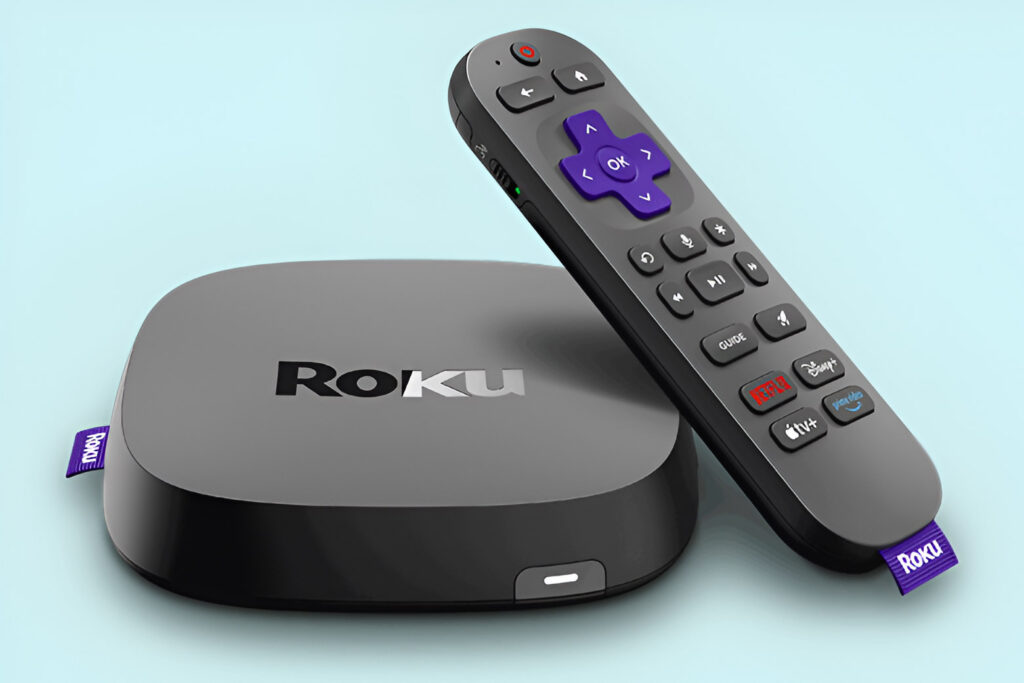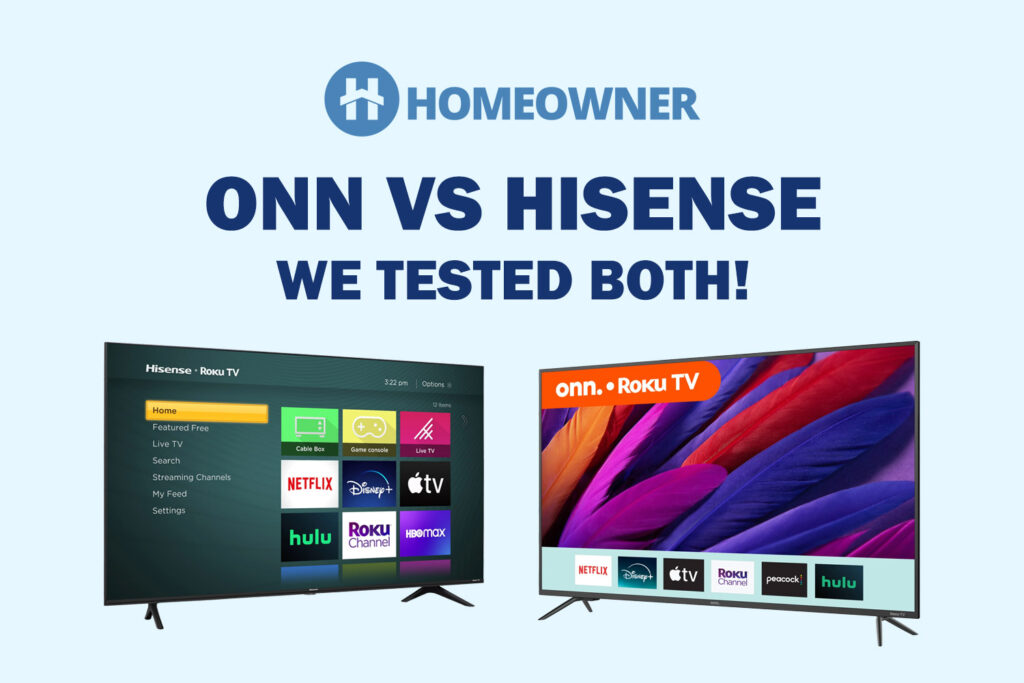DOCSIS 4.0 is the next-generation modem tech infrastructure that improves the speed, latency, and lifespan of a modem, that too at a reasonable cost. It's a successor of the DOCSIS 3.1 infrastructure and here's an update regarding its release:
With that out, in this article, I shall discuss its specifications, speeds, improvements, launch, and much more. So, without any further ado, let’s get going!
What is DOCSIS 4.0?
The first part of this next-gen technology is still Data over Cable Service Interface, which is a relevant Broadband market terminology.
DOCSIS, or as you know it, is an incremental technology with each suffix, say 2.0, 3.0, and 3.1 signifying an increase in the overall speed limits, upstream and downstream.
It plans to take the capabilities of older generations and amplify them multifold. Plus, DOCSIS 4.0 speed will focus on an oft-neglected area of internet usage — the uploads. But that’s not it.
There is much more like using spectrum up to 1.8 GHz, symmetrical download and upload bandwidths, lowest possible latency, etc. And I shall discuss everything necessary across the subsequent sections.
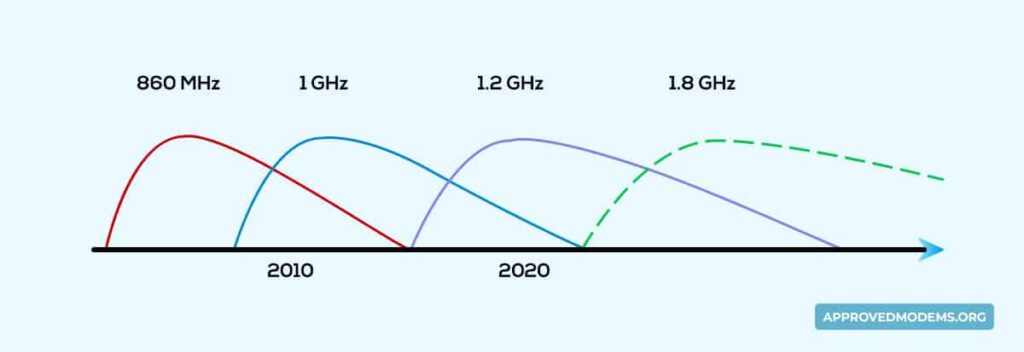
DOCSIS 4.0 aims to carry this tradition forward by significantly enhancing the downstream and upstream speed limits. The highs of 4.0 are measured in relation to 3.1, which supplies broadband over coaxial cables.
DOCSIS 4.0, on the other hand, helps you with broadband capabilities over HFC (Hybrid Fiber Coaxial), thereby helping users experience multi-gig throughput with ease.
And while DOCSIS 3.1 is capable of reaching max downstream and upstream speeds of 10 Gbps and 1.5 Gbps, respectively, DOCSIS 4.0 tries to spice up the upload speed limits, enhancing the limit by four times to 6 Gbps.
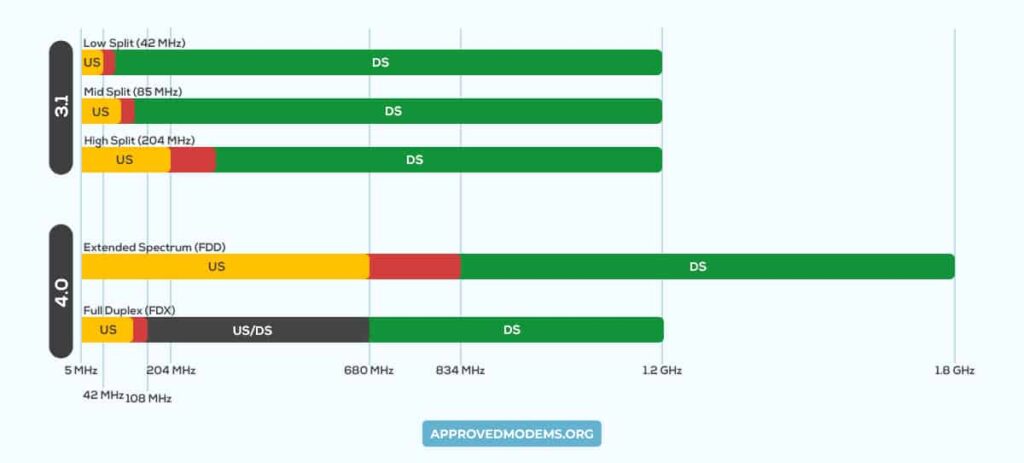
Apart from speeds, some other improvements are also expected with the deployment of 4.0. I've discussed them in detail in the DOCSIS 3.0 vs 3.1 vs 4.0 comparison. In short, you get upgrades over speeds, security, networking strength, reliability, and more, but with an increased cost.
From a tech perspective, DOCSIS 4 assumes two different flavors per user requirements. The first one is the Full Duplex or FDX variant that aims to amplify the upstream capabilities by 6Gbps, as mentioned above.
Simply put, the FDX flavor aims for symmetrical internet services by enhancing upstream capabilities like the downstream ones.
However, if amplifying upstream speeds isn’t a priority, DOCSIS 4.0 even offers the Extended-Spectrum or ESD flavor, allowing you to maximize the downstream capabilities by increasing the frequency range to even 1.8GHz. This flavor aims to minimize interference and improve throughputs further.
In simple terms, DOCSIS 4.0 is explicitly about bandwidth enhancement, aiming to cut through the rigidities of the 10:1 downstream/upstream difference.
DOCSIS 4.0 Specifications
The aim of DOCSIS 4.0 is to maximize speeds, improve the reliability of connections, and keep latency lower than DOCSIS 3.1-powered cable modems. And it plans to achieve all these with bare minimum cabling.
Just so you know, here are the specifications to take care of before you pin your hopes on the DOCSIS 4.0 standard:
1. DOCSIS 4.0 Speed Limits
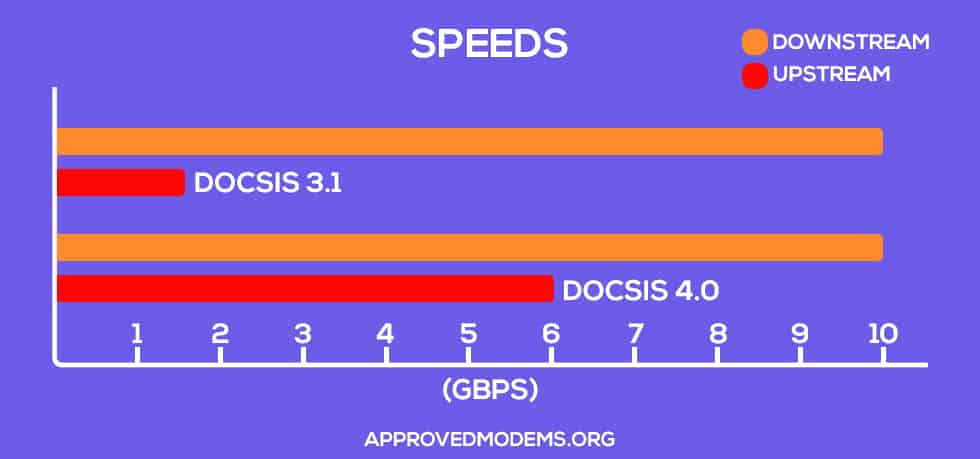
If you plan to embrace the new technology just for speed, there isn’t much to discuss, especially on paper. With DOCSIS 4.0 Full-Duplex flavor, you can experience upstream speeds of up to 6 Gbps, which is quite a bump over the 1.5 Gbps speed limit offered by the DOCSIS 3.1.
The DOCSIS 4.0 max speed limit for downstream remains the same as DOCSIS 3.1 at 10 Gbps. Yet, the latency is on the lower side, courtesy of the ESD flavor with enhanced transmission zones that range between 85 MHz and 240 MHz.
Also Read: What are good download and upload speeds?
2. Low-Latency DOCSIS Technology
Even before this section, I have been talking about the low-latency traits of the DOCSIS 4.0 technology. The low-latency DOCSIS or LLD specifications ensure that data in the DOCSIS 4.0 travels from one point to another in under 1 ms.
The ESD flavor of DOCSIS 4.0 ensures lower-than-usual latency, especially by reducing the latency speeds to under 5ms even in the most congested networks— all thanks to the beefier transmission channels in play.
3. Backward Compatibility
Despite the talks regarding the Hybrid Fiber Cable setup, backward compatibility has to be one of the more important specifications of DOCSIS 4.0.
This attribute would allow 90% of the existing US households to adopt the same if and when the technology is available for general consumption. In simple words, DOCSIS 4.0 modems will work with the existing cable or coaxial infrastructure.
DOCSIS 4.0 vs DOCSIS 3.1
Here is a brief DOCSIS 3.1 vs 4.0 comparison to learn the major differences between the two:
- An enhanced upstream speed limit of 6Gbps
- Improved upstream and downstream speeds, courtesy of the wider spectrums to work with
- Improved AQM (Active Queue Management) support for better data and bandwidth allocation
- Enhanced security
Also, here is a detailed table to help you understand the differences between all the DOCSIS iterations:
| Parameters | DOCSIS 1.0 | DOCSIS 1.1 | DOCSIS 2.0 | DOCSIS 3.0 | DOCSIS 3.1 | DOCSIS 4.0 |
|---|---|---|---|---|---|---|
| Upstream Speed Capping | 10Mbps | 10Mbps | 30Mbps | 200Mbps | 1.5Gbps | 6Gbps |
| Downstream Speed Capping | 40Mbps | 40Mbps | 40Mbps | 1Gbps | 10Gbps | 10Gbps |
| Date of Issue | 1996 | 1999 | 2001 | 2006 | 2013 | 2019 |
| Major Specs | Standard Internet Access | Internet + VoIP+ Gaming + Streaming | Better Uploads | Channel Bonding, IPv6, Better Performance During Interference. | Improved Transmission Capacity Wideband Channel OFDM Support | Everything of other DOCSIS Versions Higher Upload Speeds Wider Channels |
DOCSIS 4.0 vs Fiber
- Bandwidth: DOCSIS infrastructure anticipates at least 10 Gbps pipe amongst users, which is expected to rise in the future. In fiber, 10 Gbps is deployable on a single wavelength, and with 10 available channels, it adds up to 100 Gbps.
- Cost: Most households in the country already have a coax connection. On the other hand, installing fiber involves trenching, permits, and tearing up people’s loans.
- Reliability: Reliability is a challenge for DOCSIS-based setups due to environmental and mechanical failures. And user experience degrades. Comparatively, there are fewer problems with fiber, and any failure in the plant doesn’t affect users much.
- Marketing: DOCSIS 4.0 has already become the talk of the town with the launch news, so not much marketing is needed. On the other hand, Fiber is already one of the popular connections out there.
When Will DOCSIS 4.0 Be Released?
If you're heading towards buying a new modem, it might be time to hold for some time. While DOCSIS 3.1 modems can handle almost every existing and futuristic networking requirement, what if I told you that DOCSIS 4.0 is almost here?
Currently, there is no single DOCSIS 4.0 modem on the market. Also, for DOCSIS 4.0 and faster upload and download speeds to become a reality, most cable service providers should launch multi-Gig internet plans based on this latest modem technology.
But I assume, by the end of 2023, brands like Motorola and ARRIS will launch cable modems and modem/router combos with DOCSIS 4.0, bolstered further by link aggregation support and better wireless capabilities.
And even if the service provider doesn’t offer multi-Gig speeds, DOCSIS 4.0-inspired devices might allow you to connect more devices, thereby improving Wi-Fi and multiplexing capabilities.
Frequently Asked Questions
As per the latest timeline, DOCSIS 4.0 as a network standard might show up across networking devices by the end of 2023 or in the first quarter of 2024.
The 4.0 offers 4 times higher upload speeds than DOCSIS 3.1. This feature makes internet services more symmetrical in nature.
DOCSIS 4.0, all thanks to the ESD flavor, makes way for wider transmission channels for downstream and upstream data transfers. Therefore, even if you do not want higher upload speeds, you can expect 4.0 to significantly lower gaming latency and improve downstream throughput.
Conclusion
DOCSIS 4.0 networking standard isn’t just an enhancement over the older DOCSIS technologies. In fact, this is one of the few standards that takes upstream speeds into consideration, thereby sparing a thought for online education, video conferencing, and other relevant services.
And while I do not have the official DOCSIS 4.0 release date with me, it is a matter of time that this technology and relevant devices become mainstream. However, you can still opt for the DOCSIS 3.1 cable modems.


